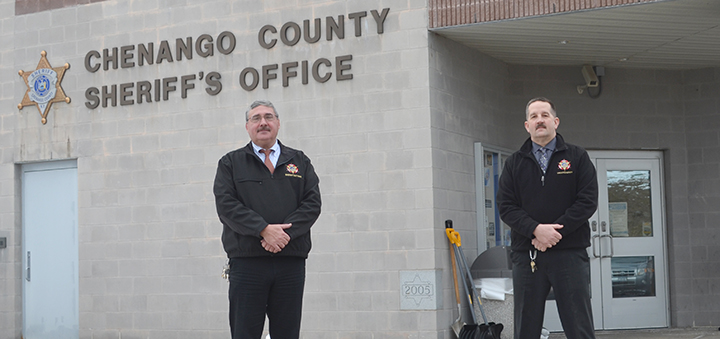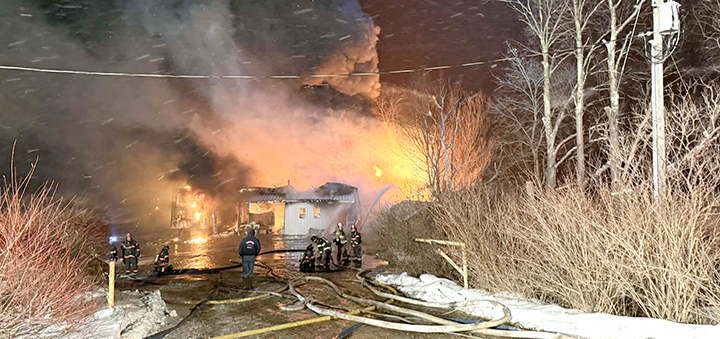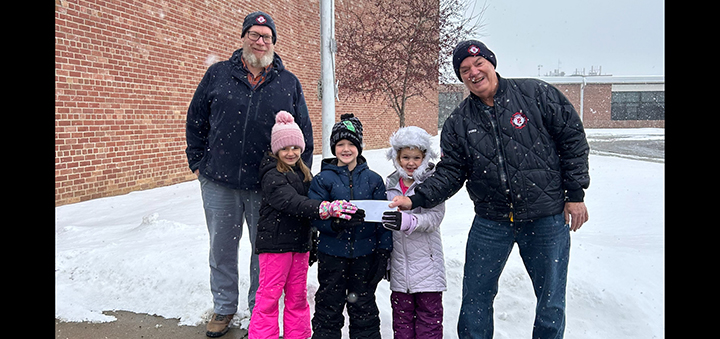PROGRESS 2021 – Chenango County Sheriff’s Office had a plan and was prepared for a pandemic
Chenango County Sheriff Ernest R. Cutting Jr. and Undersheriff Daniel Frair outside of the Chenango County Correctional Facility. The facility was COVID free until just before the winter holidays but thanks to safety practices the outbreak was brought back under control and currently there are no positive cases.
In January, before the pandemic hit the the Chenango County Correctional Facility released 137 of 189 inmates, related to new bail reforms passed by New York State.
“That actually happened under bail reform back in December. That wasn’t COVID related,” said Sheriff Ernest R. Cutting, Jr.
“So even though it was under bail reform, when COVID started, it actually helped us in the sense that we had fewer inmates that we were dealing with.”
As the virus spread and the state ordered a lockdown in mid-March the sheriff said his two main concerns were to protect key staff working in the Chenango County dispatch center and the inmates being held in the correctional facility.
“Initially, the first thing we did was shut down the dispatch center and secure it from everybody else. Yes, they were socially distanced, but because there are only 13 dispatchers over three shifts, 24 hours a day, seven days a week for 365 days a year, if I start dropping two or three dispatchers, then there’s a problem,” said Cutting.
Chief Dispatcher A. Wesley Jones, along with 911 Coordinator George Finch, implemented tight safety measures at the center, such as masking, spacing and split staff into different shifts to help avoid any outbreaks.
The dispatchers work on computers in close quarters as they coordinate fire, ambulance and police calls, essentially, all emergency calls and communication in Chenango County.
Dispatchers require eight weeks of field training to learn the job and replacing such personnel on short notice could be difficult.








Comments